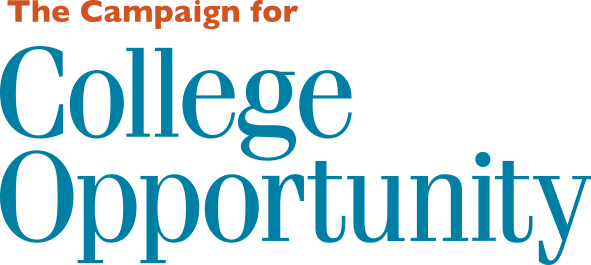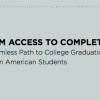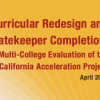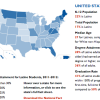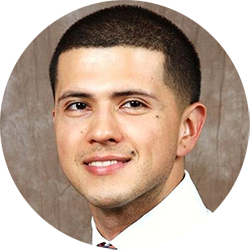
When one thinks of California, the great metropolitan areas of Los Angeles, San Diego, and San Francisco immediately come to mind. Yet, there is another important region–the Central Valley. One-quarter of the nation’s food comes from this fertile 450-mile north-south swath of land. It is here that Mexican-American and Filipino-American grape pickers formed the United Farm Workers union in 1965. An estimated 6.5 million people live in the Central Valley, and poverty rates are among the state’s highest.
The educational experience of students from the Central Valley is unlike those of their urban or suburban counterparts. Primary and secondary school students here have fewer educational options. They lack access to magnet school programs or even bussing to “better” school districts.
Carlos Maldonado, 26, was raised in the Central Valley town of Avenal, which means “oat field” in Spanish. With a population of just over 15,000, Avenal is located midway between Los Angeles—180 miles to the south—and San Francisco—200 miles to the north. The local industry is predominately agriculture, although Avenal State Prison is one of the largest employers in the area.
Carlos’s parents, Elisa and Carlos, Sr., came to the United States from Michoacan, Mexico, in their mid-teens. Carlos, Sr. was educated to the 5th grade. Elisa had a 4th grade education and would later earn her high school diploma in the United State. For 26 years, Elisa has worked at a pistachio plant sorting pistachios and, until he was disabled by injury, Carlos, Sr. worked picking fruit and pruning trees in the almond orchard.
In school, Carlos received many academic awards and distinctions. Between kindergarten and the 12th grade alone, he earned two dozen academic achievement awards. He was also honored as his high school class valedictorian.
“I knew college was a good thing. I always knew I was going to make it there somehow, one day, to a good college,” Carlos said.
Carlos had uncles who had attended community college, and he observed that they held higher status jobs than those who did not attend college.
One day at a family party when Carlos was in the seventh grade, an uncle said to him ‘maybe one day you should go out and get a Ph.D. and become Dr. Maldonado.’ “I thought no, no, no. What? A Ph.D.? I had never seen a Mexican get a Ph.D., so what made him thinkI would get one?”
Carlos was fortunate to have unconditional family support for his academic ambitions. He also learned that it was possible to take classes at nearby West Hills Community College while still in high school and earn college credit. He enrolled in a history class during the summer of his sophomore year. “I remember I only had a driving permit, and I’d have to take my dad. I told him we were going to college and he said, ‘OK,’ so we’d get in the car and then he would wait for me,” said Carlos. “They were long classes because it was summer, so my dad had to listen to a lot of radio. He waited in the car mostly.”
After graduating from Avenal High School in 2002, Carlos—like a pioneer—forged an uncharted and winding course through the state’s three college systems—the California Community College system, the California State University System, and the University of California system. Without the benefit of a counselor or mentor, his guidance system through these systems was primitive and inadequate.
The process of college enrollment can be very complicated for a first-time college student. From high school, Carlos was accepted to California State University, Northridge (CSUN), among other universities. “My heart was set on CSUN, because it was not too far from home and yet far away enough for me to be able to venture out of the Valley,” Carlos said. But weeks before his first semester at CSUN was to begin, he received a letter from the housing office informing him that he was on a wait-list for a dorm room. More than 100 students were ahead of him on the list. “I had no idea there was a housing application that had to be submitted. I was like, whoa, OK, this is a problem because classes are less than one month away and I have nowhere to live. I shared the news with my parents and asked what could we do? I called CSUN, and I told them the situation. I don’t even live in the area…what am I going to do?” Carlos said.
At risk was nearly $10,000 in scholarship awards that Carlos had won. His primary concern was keeping two of the biggest: the Masonic Foundation Scholarship, worth about $5,000, and the Paramount Farming scholarship, worth about $4,000. Both required proof of enrollment in a four-year institution.
CSUN had moved him up on the housing wait list but could not guarantee accommodations. Rather than chance losing the award money, Carlos enrolled at California State University, Bakersfield, a university that had also accepted him.
Although he found the courses to be intellectually stimulating, Carlos’s experience at CSU Bakersfield was difficult. He felt lonely and isolated. To maximize study time, he had opted to live alone in a single dorm room rather than with a roommate. He did not own a car, so off-campus diversions were inaccessible. Moving only between classes and his apartment, and still feeling the heartbreak of being unable to attend CSUN, Carlos was unhappy.
“Looking back, I still try to try to understand my experience because sometimes it’s hard for me to remember how I felt. But really,
I felt lost,” Carlos said. “That’s not a good feeling because it doesn’t allow you to develop a plan. That was always my question during that process ‘what is the next step?’ I had no idea, and that’s a really ugly feeling to have.”
A student must wait a full year before she or he can transfer between Cal State campuses. Carlos felt strongly that he could not wait out the year, so he sacrificed the scholarships and returned to Avenal, enrolling at West Hills Community College (WHCC) with the hope of transferring to another four-year institution.
“I was in limbo now with the whole college experience. I was questioning whether or not I was college material any more.
I didn’t really know who to talk to,” Carlos recalls. Luckily, Manuel, a friend from high school, was studying at WHCC. He introduced Carlos to a counselor named Sandy, who gave him the Intersegmental General Education Transfer Curriculum (IGETC) advising form. The IGETC spelled out the courses required for transfer to a University of California or California State University campus.
Carlos followed the guide and took a full course load, earning a 4.0 grade point average every semester. He regained his academic self-confidence. He feels he would not have learned of the IGETC advising form if not for Manuel. He would not have known that there was a transfer protocol to follow and believes without it, he would have enrolled in courses at will. “A lot of information I got was through word of mouth from other students,” said Carlos. “There needs to be a formalized way to get information out to students and their families.” “The transfer process needs to be made less mysterious in community college.” said Carlos.
He notes that in the Central Valley, vocational education programs—such as the Forklift Driver Certification—are advertised heavily in local papers. “I don’t see any of that effort to get students to be on track to transfer,” said Carlos. He feels that vocational education is prioritized over transfers in an effort to serve the local economies—agriculture and correctional institutions.
A relatively new program at WHCC, the Psychiatric Technicians Program is highly impacted. “It has a huge waiting list, there are students doing whatever they can to get into that program,” said Carlos. It takes eighteen months to complete, and students who finish the program will assist clinicians with interventions and treatments in the correctional facility hospitals. According to Carlos, the college advertises the program as “quick—and you come out with a job, which is fine.” But given the state’s predicted shortage of individuals with bachelor’s degrees, Carlos says colleges must change their communication strategies. “West Hills, and any other community college for that matter, must advocate transfer as a top option,” he says.
He wonders why students from that area don’t take the transfer route: “It’s almost like if you want to go do something, you have to go work in the prisons. That’s what it sounds like to me.”
After a year and a half at WHCC, Carlos transferred to the University of California, Irvine (UCI), where he majored in Psychology and Social Behavior and Criminology, Law and Society. He graduated with top honors.
Carlos’ brother Osvaldo is now in his fourth year at UCI, and Mrs. and Mr. Maldonado have a much easier time helping their youngest son Eduardo, 13, prepare for college thanks to the path paved by Carlos. Today, Carlos is a second-year Ph.D. student in the Education and Information Studies Program at the University of California, Los Angeles, and he is close to realizing his uncles’ dream of becoming the first Dr. Maldonado in the family.
Student Success Indicator
Completing courses. What may seem like an obvious indicator of student success is not mirrored in student behavior. Carlos regained his academic self-confidence when he started to successfully move through the IGETC coursework and could see the progress he was making. But in a study tracking a cohort of students entering the California Community College system in 2003 over a six-year period, students completed only 69% of the credits they attempted. Black and Latino students completed credits at even lower rates, 49% and 58%, respectively.*
SOURCE: *Moore, C., Shulock, N. (2010). Divided We Fail: Improving Completion and Closing Racial Gaps in California’s Community Colleges. Institute for Higher Education Leadership & Policy, CSU Sacramento
